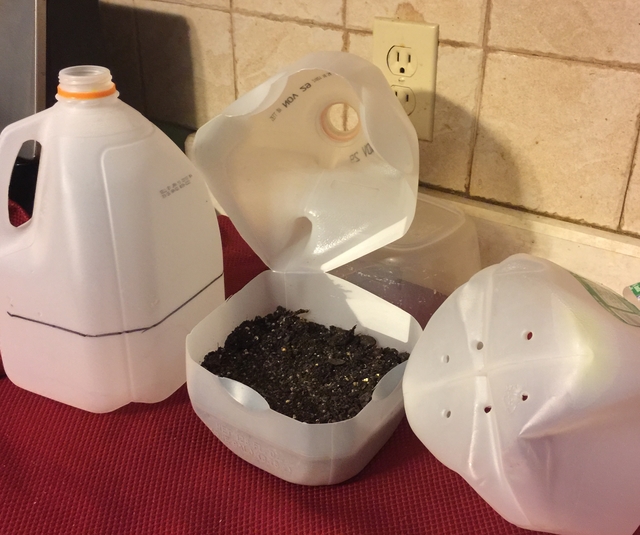Best Soil for Hostas
Best Soil for Hosta Plants
If you've heard that hostas can grow in any soil type, even poor soil, that's not exactly true. While established hostas tend to become comfortable in any soil over time, they certainly won't thrive and retain the beautiful leaves that you grow them for. Young hostas planted in poor soil will eventually succumb to disease and die.
If you want your hostas to thrive, the key is soil that is rich. The ideal soil pH for hostas ranges from 6.5 to 7.5, which actually means it's slightly acidic to slightly alkaline.
Care of your TerraCotta Pots
How to Clean Terracotta Pots
A big advantage of terracotta is its ability to absorb water from the soil. But because it will also absorb chemical fertilizers and salts found in tap water, that buildup of a crusty residue needs to be removed for the pot to be safely reused the next garden season.
Although that aged terracotta look is pleasant to some, dirty pots can harbor fungus, mold, diseases, and pests. Regular maintenance of cleaning and disinfecting them is a good garden habit to get into.
Great Gifts for Bird Lovers!
Great Gifts for Bird Lovers!
Whether it's a birthday gift, Mother's Day, Christmas, or just a thank you for that bird lover you know, here are some great gift ideas!
Hostas as Houseplants
Hostas as Houseplants
If you’re looking for a houseplant to grace your windowsill from spring to fall, hostas are a perfect choice. They will need some winter care, which you’ll read about later.
Why It's So Important to Water Hostas in the Fall
Why It's So Important to Water Hosta Plants in the Fall
With fresh, cool air and fewer insects and plant diseases to worry about, Fall is a pretty great time in the garden.
But for hostas, those beautiful leaves are beginning to die back making the plant look a bit ragged. In the Fall season, the hosta plants begin to conserve their energy in order to get ready for their winter sleep where they will await warm Spring temperatures.
Growing Radicchio - Homesteading 101

Radicchio
aka Red Chicory
Tender perennial grown as an annual
Height 6-12" Width 6-12"
This bitter Italian heading chicory is a salad favorite for its color alone. It has gorgeous deep garnet white-based leaves that add rich color and texture to salads. The heads are small, reaching a size between an orange and a grapefruit.
Types: Mostly heading types
Starting Seeds of Radicchio
Seed Depth: 1/8th" or less.Seed Spacing: 6" apart.
Germination Temp: Optimum 70-75 degrees.
Days to Germinate: 7-14.
Days to Harvest: 60-65 or 120-130 days, depending on the variety.
Seed Longevity: 4 years.
Sowing Indoors:
Spring: 8-10 weeks before your average last frost date.
Plant out 4 weeks before your average last frost date.
Sowing Outdoors:
Spring: Direct Sow 8 weeks before your average last frost date.
Fall: Direct Sow mid-summer.
Salad Spinner


Winter Sowing
If you haven't tried winter sowing, you're in for a treat. This method is especially good for sowing herbs and greens. Winter sowing is basically sowing seeds in the bottom of a milk jug during the winter, setting the milk jugs outside for the winter and leaving them there until the seeds germinate in Spring.For a detailed article about Winter Sowing, click here.
Salad Tongs

Growing Radicchio Plants
Growing Temperature: 45-75 degrees. Light frosts sweeten the flavor.Can survive into the low 20's.
Plant Spacing: Space seedlings 6" apart. Mature size 8".
Container Size: 8"+ deep. Radicchio has shallow roots.
Sun/Shade: Mostly sunny. Likes part shade during the hottest part
of the day.
Soil: Can grow in a variety of soils. Prefers good drainage.
Watering: Consistent irrigation for the best flavor.
Fertilizing:
If fertilizing is necessary, a side dressing of high nitrogen (the first number on the N-P-K scale), lower phosphate (the second number on the N-P-K-scale) isrecommended when the plant is almost a third of the way through the season.

Growing Tips
- If the plant sends up a stalk instead of forming a head, cut off the stalk at ground level to encourage the formation of a new head.
- The bitter flavor is often due to hot weather.
Harvesting Radicchio
As soon as heads are firm and compact.Radicchio matures in approximately 3 months. It should be picked when it's mature, but not old.

Using Radicchio
- Eat fresh or cook like Spinach.
- Core out the small heads and remove the center to create leafy bread.
- Radicchio's bitter flavor pairs well with the acidic sweetness of Balsamic Vinegar.
- Salt will counteract the bitter flavor and draw out the high sugar content.

Storing Radicchio For Later Use
Although tender green-leafed plants, like lettuce, cannot be preserved well, the thicker green-leafed plants can be.Fresh
- Clean and pat dry. Bundle stems lightly, place on a paper towel (to absorb moisture) and wrap in a plastic bag. Keeps in refrigerator for 10 days.
Freezing for Later Use in Chilis, Soups, Sauces, and Casseroles.
- Steam or saute' leaves, chop them and store in freezer bags.
- Puree with water and freeze into ice cube trays.
- Clean and dry the leaves and store in quart size freezer bags.
- Frozen leaves will keep for 6 months.
- Blanching the leaves for two minutes will extend freezer storage to 14 months.
To read the other articles in our Growing Your Greens series, click on the name below:
Swiss Chard
Check out our other great gardening articles: Click Here
Check out our hosta articles: Click Here
This post may contain Amazon affiliate links and as an Amazon Associate I earn from qualifying purchases without costing you anything extra.
Subscribe to:
Posts (Atom)
Featured Post
Welcome!
Thanks to you, we've hit over 1.7 MILLION pageviews! Homesteading is a journey, an adventure, and an ever-evolving quest to make our h...













